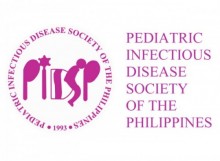Journal 2020 Vol.21 No.1
Development of a Clinical Risk Score to Diagnose Concurrent Bacterial Infections in Children with Dengue
Angeline May M. Santos, M.D. & Ma. Eva Luna O. Dizon, M.D.
Abstract
Background: The clinical course of dengue can be adversely affected by bacterial coinfection. Because of this, clinical manifestations may be severe and may lead to morbidity and mortality. Little is known about this dual infection in the pediatric population.
Objectives: This study was conducted to evaluate the clinical characteristics and risk factors of patients with dengue infection and coinfection and subsequently develop a scoring system to diagnose bacterial coinfection in patients with dengue.
Methods: A prospective cross-sectional observational study was conducted among hospitalized pediatric patients with confirmed dengue infection between January 2019 to August 2019. Baseline characteristics, risk factors, clinical parameters, laboratory findings, management and outcomes were recorded. Cases with concurrent bacterial infections were further analyzed. A scoring system was created which assigned 1 point each for the following risk factors -age ≤9 years, fever >5 days, dengue severe, and 2 points for CRP >12 mg/l)
Results: A total of 154 pediatric dengue patients were enrolled with a mean age of 8.54 ± 4.15 years, and 99 patients (64%) had bacterial coinfection. Patients with coinfection were A total of 154 pediatric dengue patients were enrolled with a mean age of 8.54 ± 4.15 years, and 99 patients (%) had bacterial co-infection. Patients with coinfection were younger, have prolonged fever (>5 days), and were more frequently observed to have hypotension, tachycardia, desaturations and bleeding. Patients with coinfection also had higher white blood cell counts (>8 x109 cells/L), higher neutrophil counts (58.80 ± 18.42 % count), and elevated CRP (>12 mg/l) and procalcitonin (>4.01 ng/L). Utilizing the scoring system developed, a score of ≥3 had a sensitivity of 66.67% and specificity of 76.36%, in diagnosing concurrent bacterial infection in children with dengue.
Conclusions: Patients with dengue and bacterial coinfections were younger with comorbidities. They presented with significantly abnormal vital signs, physical examination findings, and elevated acute phase reactants. Using age ≤ 9 years, fever >5 days, dengue severe, and CRP >12mg/l, a scoring system was developed to diagnose bacterial coinfection in patients with dengue. A score of ≥3 can help diagnose patients with dengue and bacterial coinfection who will most likely need early empiric antimicrobial therapy.
Keywords: Dengue, Concurrent Bacterial Infection, Risk Score
https://doi.org/10.56964/pidspj20202101006
| View Full Article in PDF format |
Journal 2020 Vol.21 No.1 Original Articles 4pidsp@uplink.com.ph2022-12-11T04:05:55+00:00
